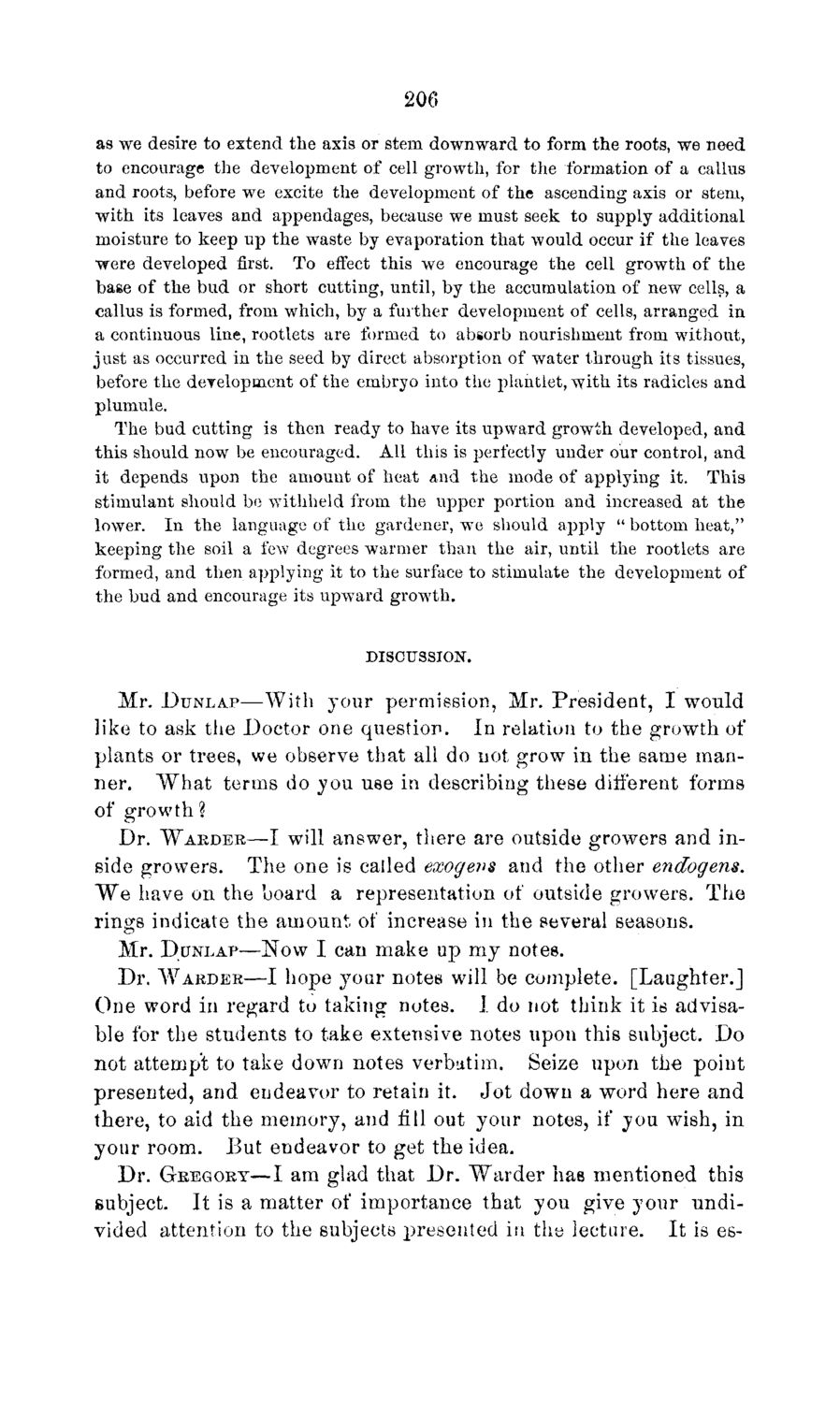| |
| |
Caption: Board of Trustees Minutes - 1869
This is a reduced-resolution page image for fast online browsing.

EXTRACTED TEXT FROM PAGE:
206 as we desire to extend the axis or stem downward to form the roots, we need to encourage the development of cell growth, for the formation of a callus and roots, before we excite the development of the ascending axis or stem, with its leaves and appendages, because we must seek to supply additional moisture to keep up the waste by evaporation that would occur if the leaves were developed first. To effect this we encourage the cell growth of the base of the bud or short cutting, until, by the accumulation of new cells, a callus is formed, from which, by a further development of cells, arranged in a continuous line, rootlets are formed to absorb nourishment from without, j u s t as occurred in the seed by direct absorption of water through its tissues, before the development of the embryo into the plantiet, with its radicles a n d plumule. The bud cutting is then ready to have its upward growth developed, and this should now be encouraged. All this is perfectly under our control, and it depends upon the amount of heat And the mode of applying it. This stimulant should be withheld from the upper portion and increased at the lower. In the language of the gardener, we should apply " bottom heat," keeping the soil a few degrees warmer than the air, until the rootlets are formed, and then applying it to the surface to stimulate the development of the bud and encourage its upward growth. DISCUSSION. Mr. DUNLAP—With your permission, Mr. President, I would like to ask the Doctor one question. In relation to the growth of plants or trees, we observe that all do not grow in the same manner. What terms do you use in describing these different forms of growth ? Dr. WARDER—I will answer, there are outside growers and inside growers. The one is called exogens and the other endogens. W e have on the hoard a representation of outside growers. The rings indicate the amount of increase in the several seasons. Mr. DrjNLAP—Now I can make up my notes. Dr. WARDER—I hope your notes will be complete. [Laughter.] One word in regard to taking notes. I. do not think it is advisable for the students to take extensive notes upon this subject. Do not attempt to take down notes verbatim. Seize upon the point presented, and endeavor to retain it. Jot down a word here and there, to aid the memory, and fill out your notes, if you wish, in your room. But endeavor to get the idea. Dr. GREGORY—I am glad that Dr. Warder has mentioned this subject. It is a matter of importance that you give your undivided attention to the subjects presented in the lecture. It is es-
| |